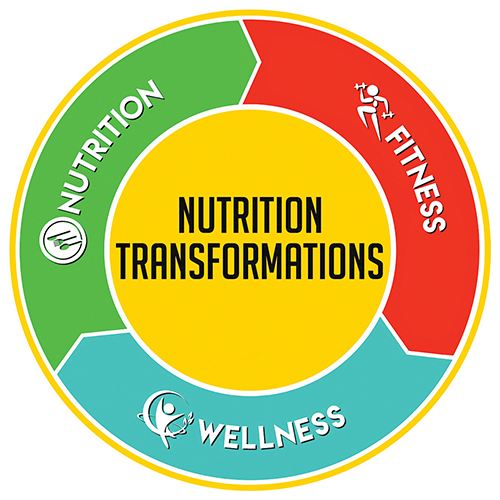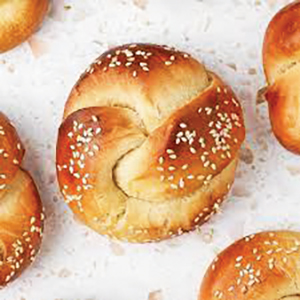
The Yom Tovim are met with expectations to spend quality time with family and friends. Effort is involved in preparing meals for the holiday season. Unfortunately, for those concerned with health, weight and wellness, the Jewish holidays can be a “season of Temptation.” There are ways to stop falling into an abyss of unstoppable overeating. Let’s explore!
Oy Vey!
It’s a challenge to control eating at seudahs. Conversation lingers around tables displayed with goodies. This cultural behavior encourages emotional eating and/or eating when you are not truly hungry. “True hunger” is when you have not eaten for hours and the body requires fuel in the form of nutrients. “Emotional eating” is the desire to eat shortly after a large meal. It is eating to satisfy emotions like anxiety, depression, stress, and nervousness, and feels soothing.
Rituals
The seudahs begin with kiddush: wine, challah and apples. Other foods and dips may be displayed on the table depending on your customs. To avoid weight gain, consume enough kiddush to fulfill the mitzvah; a kazait of challah, a slice of apple dipped in a teaspoon of honey. Note: challah can be high in calories. However, the kosher Fiber Gourmet company markets low calorie challah rolls for 100 calories per roll. They taste good too! If you make your own challah, you can control your ingredients and keep the calories reasonable. (See recipe.)

Appetizers: Soup, Fish, Eggs, Liver, Salad …
There are those who believe Yom Tov seudahs must have a variety of appetizers to fulfill the mitzvah. These customs add unnecessary calories that are converted into weight gain. For a healthy appetizer, have a light vegetable soup and/or fresh vegetable salad. If you are controlling your calories, have 4 ouncesof soup. Salad is always healthy and low in calories. Dressings add calories to foods. Olive oil, lemon juice, salt, pepper and other favorite spices make a healthy salad dressing. A diet salad dressing helps control calories. Lightly drizzle salad dressing on salads.
Main Meal
Reduce meal calories by cooking with lean meats and removing skin from poultry. Fish are reasonably caloric and considered high-quality protein. Do not prepare food with high caloric sauces. Avoid deeply frying food. Spare sugar and salt. Instead, prepare food with water, fruit juice, cooking wine and spices to add moisture and taste to recipes. AVOID calorically high kugels, kishka and vegetables loafs. SERVE INSTEAD: fresh steamed or roasted fresh vegetables, including potatoes and squash. If you do fry, use Pam or other kosher spray or lightly fry and remove excess oil to reduce calories.
Portion Size and Other Control Tips
- “MyPlate” is a guide of how your plate should look. Notwithstanding the dairy item, unless consuming milchik, this is how to plate food for meals. Notice portion sizes on the plate: grains and proteins are equal in size, vegetables the largest and fruit the smallest.
- A portion of protein is approximately 4-6 ounces or the size of your palm. Vegetable portions are liberal. Starch portions are 4-6 ounce/small potato, and a portion of fruit is either 1 fruit or ½ cup. The Diabetic Exchange List developed by the committee of the American Diabetic Association and American Dietetic Association offers information on portion sizes of foods that can be applied to MyPlate.
- Avoid second helpings. Keep the MyPlate and “rule of one” (one selection of a food group for your plate) in mind.
- Eat slowly and mindfully, one bite at a time. Put silverware down while chewing to slow eating. Savor tastes and textures of foods. Allow the brain and stomach to synchronize fullness. It is good for digestion too!
- Concentrate on conversation and relationships during meals. Don’t nibble; it’s caloric.
- Drink low calorie fluids: ice water with fruit slices, seltzer and club soda. This will fill you up and help slow eating.
- Dessert should consist of fresh fruit. Sip on a hot tea. Avoid the cake, cookies, pies etc.! If you want a sweet, consume one small portion and no seconds!
- After dessert, don’t linger at the table. Invite guests to another room to continue “calorie-free conversation.”
- Feeling hungry shortly after a hearty meal is an “emotional desire” to eat. “True hunger” is the biological need for nutrient replenishment and occurs hours after your last meal.
If you recognize that you want to emotionally eat, distract yourself, it will pass. Take a walk, talk to a friend or read, but stay away from food! It is hard to fight this urge because it requires brain training.
It also helps not to have high calorie nosh available on countertops … Out of sight, reach, and out of mind!
Invitations to Eat Out
Invited out for a meal? Share your holiday weight gain challenge with the host. A caring host will not want to jeopardize your health goals. Perhaps, the host will be happy to serve a natural, less complicated, and healthier meal. Use MyPlate and rule of one tactics at the meal. Control portion sizes, eat mindfully and slowly, and avoid high calorie desserts.
Holiday Fitness Tips
It may not be realistic to lose weight during the Yom Tovim. Instead focus on maintaining your current weight. Here are some recommendations:
- Walk off your heavy meals. Burn off excess calories by jump-starting your metabolism, even on Yom Tov!
- On Chol Hamoed lift weights. Keep muscle mass and burn off holiday fat.
- Keep stress down with yoga, tai chi or stretching exercises.
General Thoughts
It is important to take care of yourself. Control diet and exercise. “Center” emotions with stress-reduction activities. Consume adequate fluids and get enough sleep and rest to avoid cravings.
Nutrition Transformations can help you start your Rosh Hashanah resolutions. Better your life by eating healthy, achieving desired body weight and getting fit. Call now for an appointment. We use FDA approved weight loss medication to jump start your weight loss journey!
Yours in good health and Shana Tova!
Jenn
Founder, Nutrition Transformations
(718) 644-1387
See holiday blog

100 Calorie Challah Rolls
24 servings
Bake at 300 degrees
Prep: 30 minutes
Cook time: 30 minutes
Number of Servings: 24
Ingredients
- 2 teaspoon instant yeast
- 1/4 cup all-purpose flour
- 1/4 cup warm water
- 3 large eggs, plus 1 for glazing
- 1 teaspoon table salt
- 1/4 cup vegetable oil
- 1/4 cup honey
- 1 1/4 cups white flour
- 2 cups whole wheat flour
- Sesame or poppy seeds
Directions
- In a large bowl, whisk yeast, 1/4 cup white flour, and warm water. Let it stand uncovered 10-20 minutes until begins to puff up slightly.
- Whisk 3 eggs, salt, honey and oil into the yeast mixture. With wooden spoon, stir in remaining 1 1/4 cups of the white flour and 2 cups of the whole wheat flour. (Add all the flour at once.) When you can’t mix with spoon anymore, knead by hand in the bowl for no more than 5 minutes. Should be very firm dough.
- In same bowl, let rise for 2 hours until doubled in bulk (approx. 2 hours in warm kitchen).
- If you want individual challahs, separate into 24 pieces. Weigh the dough and divide by 24 to figure out how big each piece should be—about 35 grams each or a rounded tablespoon. Shape each piece into loose knot pressing the two loose ends together. You could also separate into three loaves, braid each one, and cut into 8 pieces each when you serve. Let rise on a parchment paper lined cookie sheet or in individual oiled muffin tins until doubled in size, another two hours.
- Brush the loaves with egg from final egg. Sprinkle with sesame seeds or poppy seeds. Bake at 300 degrees for about 20 minutes, until lightly browned.









